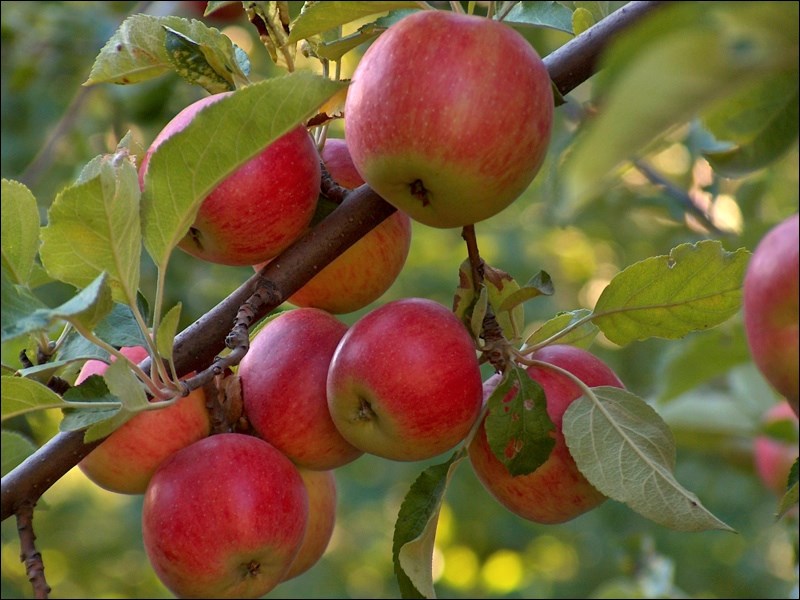Once again we are wishing Canada a very happy birthday on July 1. We especially wish to reinforce how great it is to be living in Canada by growing special plants that help us further appreciate our heritage.
The Canadian Shield Rose is taking a centre stage in gardens everywhere. It was aptly named after the ancient Canadian Shield formation that covers more than half of Canada. The development of this rose began in Morden, Man. with the Explorer breeding program and finished its development in Niagara in the Vineland Research Station. It boasts a scarlet red flower that is fully double and average a good eight centimetres in diameter. It also has a long blooming time and will grace your garden from mid-summer right through to autumn. It is around 150 centimetres tall and will spread out to almost as wide. In celebration of Canada’s birthday we also planted some of these roses in the mini golf landscape we are currently installing in Waskesiu.
Believe it or not, the McIntosh apple is as Canadian as it gets. In 1811, John McIntosh discovered an apple sapling on his farm in Ontario that produced this outstanding apple for taste, texture and appearance. John’s son Allan promoted it widely and ensured the McIntosh apple became one of the most popular apple varieties in Canada.
Another great apple also boasts great Canadian heritage. The Spartan apple was first developed in Summerland, B.C. by R.C. Palmer at a federal experimental farm.
Two potatoes are also “made in Canada.” The Yukon Gold was bred at the University of Guelph in 1966 and is known to be a great baking/boiling potato and has good longevity in storage. The best all around french fry potato is the Shepody, which was released in 1873 by Agri-Food Canada in Fredericton, N.B. It also flourishes in a short growing season, perfect for us in Saskatchewan.
As we are the breadbasket of the world, it would be remiss not to mention some of our grains. Red Fife wheat is the oldest of the nation’s wheat varieties first grown in Ontario in 1842. It was considered Canada’s wheat standard for more than four decades. In the early 1900s a new cross between Red Fife and Hard Red Calcutta produced Marquis, which replaced Red Fife as the leading wheat. The yield and quality of Marquis made Canada the largest wheat-exporting nation on the planet.
As a little girl I remember my grandfather, Floyd Glass, growing rapeseed and he always had a big bag of rape at their house where we spent many good times while growing up. In the 1970s canola was created by researchers from Agriculture and Agri-Food Canada and the University of Manitoba. Canola is considered to be one of the most important oilseed crops in the world and has proved to be the most lucrative for Canadian farmers.
This Canada Day take a moment to think about how wonderful it is to be “Made in Canada.” Happy Canada Day.
— Hanbidge is a horticulturist with the Saskatoon School of Horticulture and can be reached at 306-931-GROW(4769); by email at [email protected]; facebook: @schoolofhort; twitter: @hortiuclturepat; instagram: patyplant or check out our website at saskhort.




